| December 28, 2007 |  |
MarsDaily Advertising Kit |
| Previous Issues | Dec 27 | Dec 26 | Dec 25 | Dec 24 | Dec 23 |
How Mars Could Have Been Warm And Wet But Limestone-Free Cambridge MA (SPX) Dec 24, 2007
Cambridge MA (SPX) Dec 24, 2007Planetary scientists have puzzled for years over an apparent contradiction on Mars. Abundant evidence points to an early warm, wet climate on the red planet, but there's no sign of the widespread carbonate rocks, such as limestone, that should have formed in such a climate. Now, a detailed analysis in the Dec. 21 issue of Science by MIT's Maria T. Zuber and Itay Halevy and Daniel P. Schrag of Ha ... more Global Map Reveals Mineral Distribution On Mars  Laurel, MD (SPX) Dec 24, 2007
Laurel, MD (SPX) Dec 24, 2007Scientists are getting a clearer image of mineral distribution on the surface of Mars, thanks to the Compact Reconnaissance Imaging Spectrometer for Mars (CRISM), one of six science instruments on NASA's Mars Reconnaissance Orbiter, currently circling the planet. More than 200 just-released "spectral maps" reveal the distribution of various minerals on the surface of Mars -- the first installmen ... more NASA Delays Mars Scout Mission To 2013  Washington DC (SPX) Dec 24, 2007
Washington DC (SPX) Dec 24, 2007NASA has decided that the next mission in the Mars Scout program, originally planned for launch in 2011, is now targeted for launch in 2013. The schedule slip is because of an organizational conflict of interest that was discovered in one of the mission proposal team's Phase A Concept Study. This was the shortest delay for the mission possible because opportunities to send spacecraft to Mars occ ... more Sulfur Dioxide May Have Helped Maintain A Warm Early Mars  Cambridge, MA (SPX) Dec 24, 2007
Cambridge, MA (SPX) Dec 24, 2007Harvard University Sulfur dioxide (SO2) may have played a key role in the climate and geochemistry of early Mars, geoscientists at Harvard University and the Massachusetts Institute of Technology (MIT) suggest in the Dec. 21 issue of the journal Science. Their hypothesis may resolve longstanding questions about evidence that the climate of the Red Planet was once much warmer than it is today. ... more Catalina Sky Survey Rocks Mars With New Asteroid Discovery  Tucson AZ (SPX) Dec 24, 2007
Tucson AZ (SPX) Dec 24, 2007An asteroid discovered by The University of Arizona's Catalina Sky Survey has a one-in-75 chance of hitting Mars Jan. 30, scientists tracking it say. Catalina Sky Survey team member Andrea Boattini discovered the asteroid, designated 2007 WD5, with UA's Mount Lemmon 60-inch telescope in the Santa Catalina Mountains north of Tucson on Nov. 20. At the time, the asteroid was at 20th magnitude ... more |
mars-general
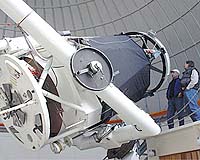 mars-water-science 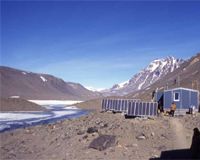 mars-general 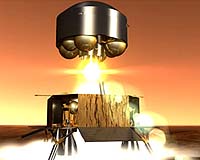 |
 Pasadena CA (SPX) Dec 21, 2007
Pasadena CA (SPX) Dec 21, 2007Opportunity is now in the process of driving to the third band of light-colored rocks that circumvent "Victoria Crater" beneath the rim. Scientists had initially planned to have the rover head directly downhill to a rock target nicknamed "Ronov," within the band known as "Lyell." They selected an alternate rock exposure, dubbed "Newell," when engineers determined that the original drive r ... more Asteroid could hit Mars next month: NASA  Los Angeles (AFP) Dec 21, 2007
Los Angeles (AFP) Dec 21, 2007An asteroid hurtling towards Mars has a one in 75 chance of chance of scoring a direct hit on the red planet next month, NASA experts said in a statement Friday. The US space agency's Near Earth Object Program (NEOP) revealed that the asteroid's exact course was difficult to predict, but said it could slam into Mars on January 30, leaving a crater measuring an estimated 1 kilometer across. ... more Sulfur Dioxide May Have Helped Maintain A Warm Early Mars  Cambridge MA (SPX) Dec 21, 2007
Cambridge MA (SPX) Dec 21, 2007Sulfur dioxide (SO2) may have played a key role in the climate and geochemistry of early Mars, geoscientists at Harvard University and the Massachusetts Institute of Technology suggest in the Dec. 21 issue of the journal Science. Their hypothesis may resolve longstanding questions about evidence that the climate of the Red Planet was once much warmer than it is today. The Science paper's a ... more Spirit Update: Soon To Find Winter Resting Place  Pasadena CA (SPX) Dec 20, 2007
Pasadena CA (SPX) Dec 20, 2007To make the most of waning sunlight during the approach of Martian winter, Spirit's handlers have returned to "Mars time." This means their working hours coincide with the Martian day, as they did for the first three months after the rover landed on the red planet. Because a Martian day is about 40 minutes longer than an Earth day, Mars time can coincide with all hours of the day and night on ... more |
spacetravel
 mars-general 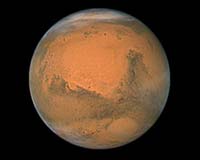 iss 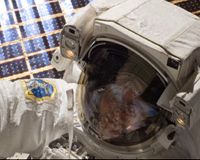 |
 Glassboro NJ (SPX) Dec 18, 2007
Glassboro NJ (SPX) Dec 18, 2007'Tis the season for Rowan University physics and astronomy associate professor David Klassen. "Mars season" that is. December 24 marks the Mars opposition-the point at which Earth and Mars pass each other in their orbits. Visions of the planet will be dancing in Klassen's telescope in the coming days because Mars appears three to five times bigger in the sky during the opposition-quite a seasona ... more Spirit Scouts Home Plate For Safe Haven  Pasadena CA (JPL) Dec 17, 2007
Pasadena CA (JPL) Dec 17, 2007Spirit has arrived at the north edge of "Home Plate." The rover will spend the next few Martian days, or sols, scouting the edge of Home Plate and acquiring images of the slopes to determine the best site for "Winter Haven 3," where Spirit will try to survive another season of minimal sunlight. Once the team selects a site, Spirit will drive down the north-facing edge of Home Plate and maneuve ... more India installs antennas for planned moon mission: official  Bangalore, India (AFP) Dec 16, 2007
Bangalore, India (AFP) Dec 16, 2007India has installed a pair of giant antennas to monitor a planned robotic mission to the moon next year, making it one of a few nations with deep space tracking ability, officials said. The deep space network at Byalalu, 45 kilometres (30 miles) from Bangalore, will keep track of the Chandrayaan-1 lunar mission and provide command support during its two-year orbit around the moon, India's sp ... more Mars Orbiter Examines Lace And Lizard Skin Terrain  San Francisco CA (SPX) Dec 13, 2007
San Francisco CA (SPX) Dec 13, 2007Scrutiny by NASA's newest Mars orbiter is helping scientists learn the stories of some of the weirdest landscapes on Mars, as well as more familiar-looking parts of the Red Planet. One type of landscape near Mars' south pole is called "cryptic terrain" because it once defied explanation, but new observations bolster and refine recent interpretations of how springtime outbursts of carbon-di ... more
|
lunar
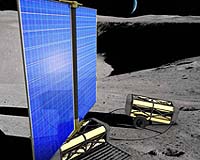 mars-life 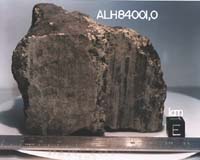 mars-mers 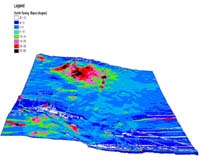 |
| Previous Issues | Dec 27 | Dec 26 | Dec 25 | Dec 24 | Dec 23 |
| The contents herein, unless otherwise known to be public domain, are Copyright 1995-2007 - SpaceDaily. AFP and UPI Wire Stories are copyright Agence France-Presse and United Press International. ESA Portal Reports are copyright European Space Agency. All NASA sourced material is public domain. Additional copyrights may apply in whole or part to other bona fide parties. Advertising does not imply endorsement, agreement or approval of any opinions, statements or information provided by SpaceDaily on any web page published or hosted by SpaceDaily. Privacy statement |